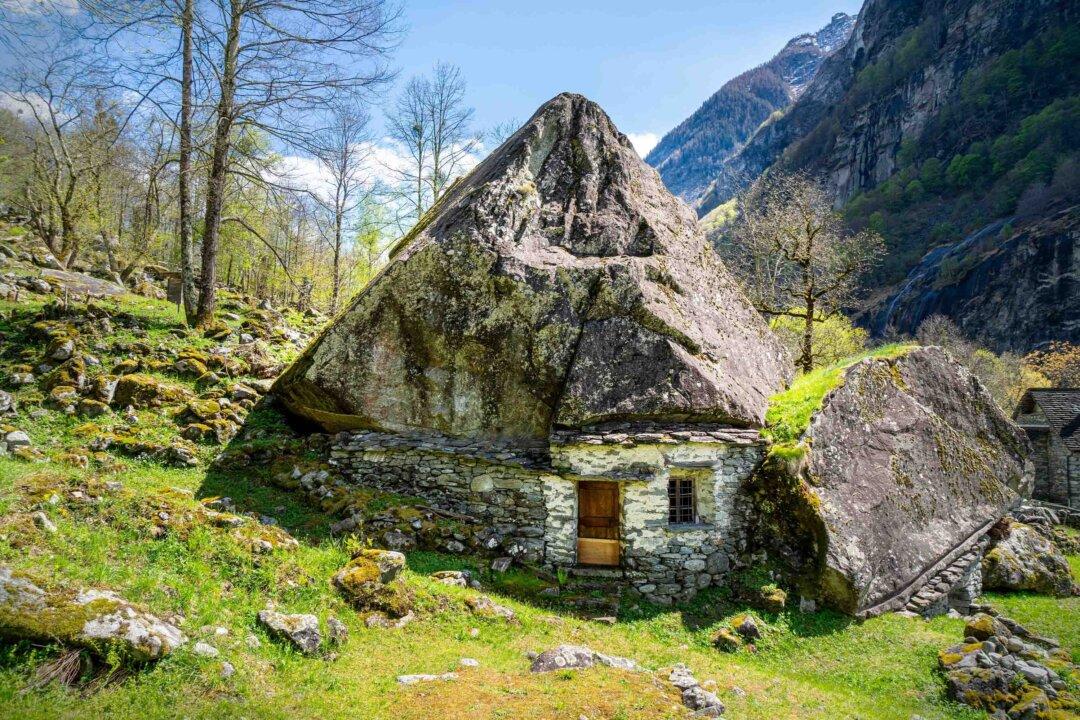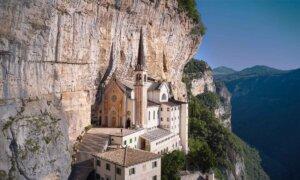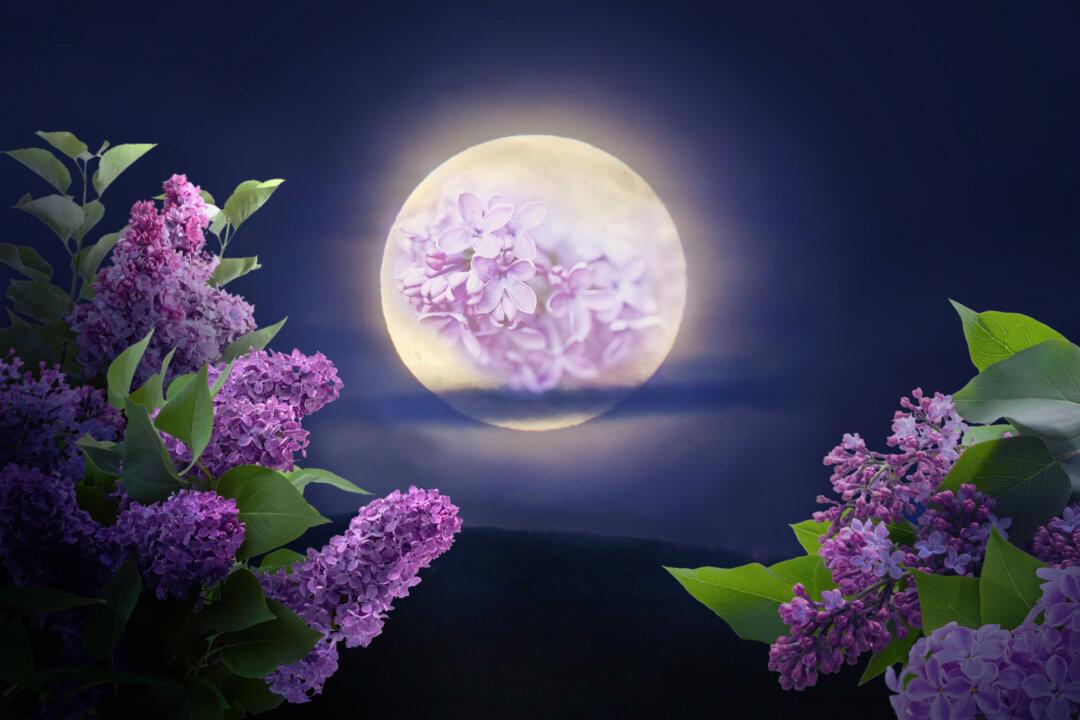There are no iPhone chargers plugged into the stone walls, no microwave ovens, or light switches in the hamlets of Bavona Valley.
It is, and for centuries has been, a daunting lifestyle for those inhabiting a string of lost homes in this Italian-speaking region, here in the southern Swiss Alps. Akin to hobbit dwellings from a Tolkien book or a fairytale town, cave-like abodes permeate under and in between gargantuan stones. Scattered everywhere are the remnants of earth-trembling rockslides.
Harshness aside, the scenery is gorgeous—bordering on magical. How surprising is it anyone would want to live here?
A historian and medievalist, Mr. Zappa, with his little round glasses and rugged features, has conducted extensive excavations and mapped most of these distinctive rock homes—called splüi by locals—throughout the valley.



Nested in a pretty trough valley with sheer cliff walls on either side and debris on the valley floor covered in blankets of moss and encroaching woodland, less than 2% of this land is arable. Agriculture had to be introduced in novel ways by resourceful folks, making use of plots as little as 1 square meter; terraced gardens were dug into the sides of cliffs, some at dizzying heights, to grow food; while soil-covered rocks, called balòi, allowed small kitchen gardens to be planted.
“It’s rocky, steep, and unforgiving,” Mr. Zappa said. “But if all the other good land has been taken, you’ve no choice but to look elsewhere.”
But despite the harsh, rugged conditions, the inhabitants of Bavona Valley live here by choice—albeit mostly in summer—because living off-grid plugs them into their roots. Life without electricity isn’t seen as a disadvantage, Mr. Zappa said. They are accustomed to using wood for warmth and candles when it gets dark. The region’s sometimes sunless days make an ample store of candlesticks essential, yet the cooler weather allays the need for refrigeration.


While people living in hamlets like Foroglio and Sonlerto once stayed year-round, today, and for several centuries, most spend winters down the pass in towns like Cavergno and Bignasco, where there are more comforts and amenities. In summer, they drive livestock up to graze in the cooler, higher pastures of Bavona Valley again, adopting a practice called transhumance.
Evidence of settlements in Bavona Valley is believed to trace back 5,000 years, though a Roman necropolis toward the south shows that ancient European empire visited as early as the first century B.C.


A pastoral economy with herds of goats produced hard cheese and modest farming practices. The region’s now famous terraced “hanging meadows” helped inhabitants win back land to grow rye, millet, potatoes, onions, and hemp.
Eventually, the Little Ice Age around 1500 A.D. began unraveling their modest way of life. Winters got longer and summers wetter, with rain causing hundreds of waterfalls to overflow rivers, taking away already scarce farmland. The people of Bavona Valley lost all hope of staying, and a mass exodus down the mountain pass soon followed.


Coupled with the fact that no roads reached here until 1955, this exodus left settlements looking lost in time. Locals would return only during the summer to lead their rustic way of life—as they preferred.
Even as late as the 1950s, when hydroelectric power arrived in Bavona Valley, the vast majority living in the towns were happy to remain off-grid. Talks were held but amounted to nothing; the valley’s 12 hamlets gathered for a vote and 11 out of 12 chose to stay unplugged, preferring to live more simply.




Today, you can hike Bavona Valley on day trips from the nearby cities of Lugano and Locarno or stay in picturesque accommodations in Bignasco; the cheese gnocchi in butter sage sauce is a local specialty. A ride to the top in San Carlo’s cable cars offers an awe-inspiring panorama.
By most accounts, the inhabitants of Bavona Valley are just fine with their candles and no power. Other than the odd rooftop solar panel, providing a few watts for a freezer, most enjoy making do with less. Phone chargers and microwaves be darned.








